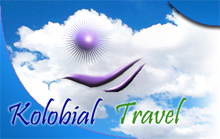|
Business: Third party introductions are useful when conducting business in the Philippines and face-to-face communication is key. Emphasis is placed on building good working relations and getting to know each other. Business is conducted formally, and although punctuality is important, meetings may not begin on time. Dress should be conservative; suits and ties are the norm. Many Filipino men wear a shirt known as a barong tagalong, which is a far cooler option in the humid environment. It is very important for Filipinos not to lose face and so one should be mindful of not embarrassing or offending anyone. Any food or drink offered should be accepted, as this is a sign of hospitality. English is widely spoken in business circles. Business hours are usually 8am to 5pm Monday to Friday.
Duty Free: Travellers to the Philippines over 18 years do not have to pay duty on 400 cigarettes or 50 cigars or 250g pipe tobacco; and 2 litres of alcoholic beverages. Prohibited items include firearms or parts thereof, explosives and ammunition; printed material that contains subversive, obscene or pornographic content; drugs, gambling machines, lottery sweepstake tickets, or coin-operated video machines; gold, silver and other precious metals that do not have authentication of quality; non-identifiable brands of medicines or foodstuffs; coca leaves and any prohibited drugs; plants or parts thereof, fruits and vegetables. The Philippines has a tropical marine climate dominated by a rainy season and a dry season. The summer monsoon brings heavy rains to most of the country from May to October, and the winter monsoon brings cooler and drier air from December to February. Manila and most of the lowland areas are hot and dusty from March to May, when temperatures can rise to around 99°F (37°C). Average sea-level temperatures rarely drop below 80°F (27°C). Monsoons are possible between July and October. Entry requirements for Americans: United States citizens must have a valid passport. No visa is required for a stay of up to 21 days; extensions are possible. Entry requirements for UK nationals: British citizens must have a valid passport. No visa is required for a stay of up to 21 days. A tourist visa from the Philippine embassy is valid for 59 days. Entry requirements for Canadians: Canadians must have a valid passport. No visa is required for a stay of up to 21 days. Entry requirements for Australians: Australians must have a valid passport. No visa is required for a stay of up to 21 days. Entry requirements for South Africans: South Africans must have a valid passport. No visa is required for a stay of up to 21 days. Entry requirements for New Zealanders: New Zealand nationals must have a valid passport. No visa is required for a stay of up to 21 days. Entry requirements for Irish nationals: Irish citizens must have a valid passport. No visa is required for a stay of up to 21 days. Passport/Visa Note: Everyone entering the Philippines must have a passport valid for at least six months beyond the intended period of stay. If there is an embassy of country of nationality in the Philippines, then the passport can be valid for less than six months. All visitors must have return or onward tickets and documents necessary for further travel, as well as sufficient funds. Note: Passport and visa requirements are liable to change at short notice. Travellers are advised to check their entry requirements with their embassy or consulate
|
|
||||||||||||||||||||||||||||||||||||||||||||||||||||||||||||||||||||||||||||||||||||||||||||
|
||||||||||||||||||||||||||||||||||||||||||||||||||||||||||||||||||||||||||||||||||||||||||||
|
|
|
||||||||||||||||||||||||||||||||||||||||||||||||||||||||||||||||||||||||||||||||||||||||||
|
||||||||||||||||||||||||||||||||||||||||||||||||||||||||||||||||||||||||||||||||||||||||||||


